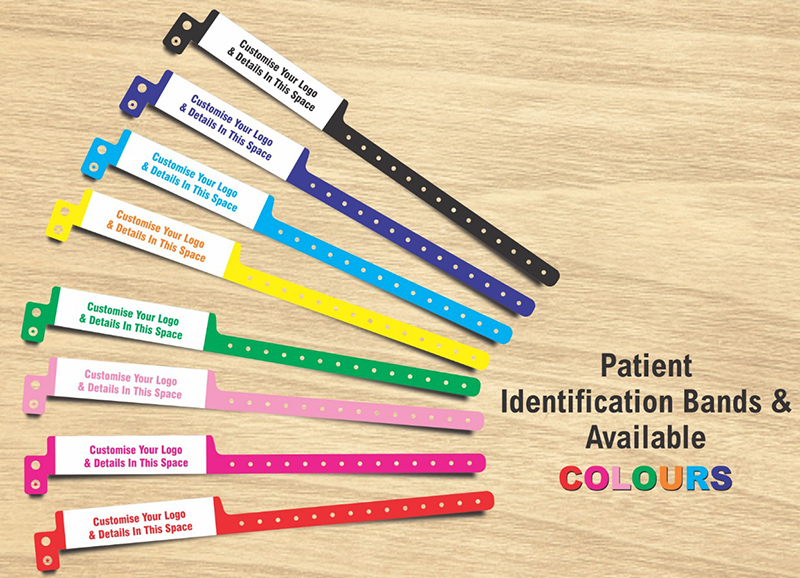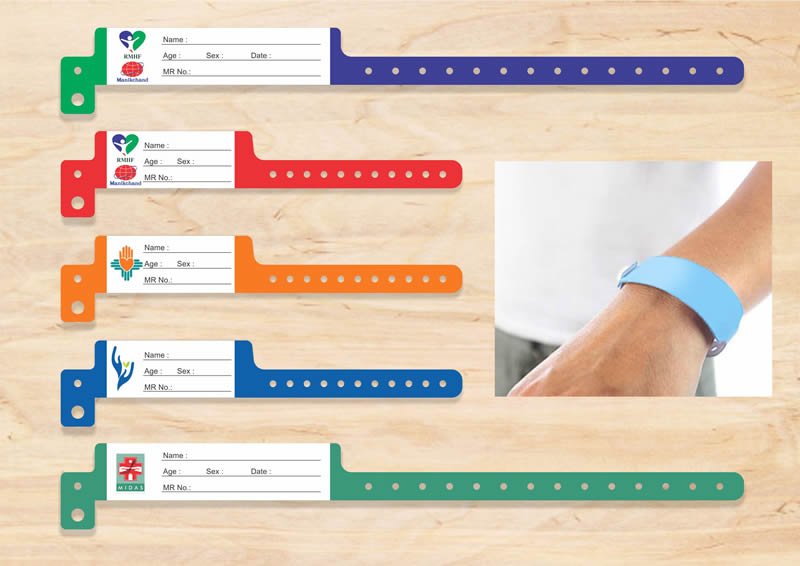The Value of Using a Patient Identification Band in Contemporary Medical Practices
The Value of Using a Patient Identification Band in Contemporary Medical Practices
Blog Article
Checking Out the Various Kinds Of Patient Identification Band Made Use Of in Clinical Facilities
In the detailed world of healthcare, the crucial function of Patient Identification bands often goes unnoticed. These bands, differing from easy paper wristbands to sophisticated RFID bands, create the backbone of Patient safety and security protocols, making sure accuracy in Patient Identification.
Comprehending the Importance of Patient Identification Bands
While they might appear like mere devices, Patient Identification bands play a crucial duty in medical facilities. These bands offer as a critical tool for verifying Patient identity, stopping clinical errors associated to misidentification. The bands commonly display vital details such as the Patient's name, age, blood type, and any type of well-known allergic reactions. They allow healthcare professionals to rapidly access this crucial info, consequently promoting exact and punctual clinical treatment. Patient Identification bands likewise aid in simplifying management jobs, making certain accurate record-keeping and billing. In spite of their simplicity, these bands embody the principle of Patient safety and security, a cornerstone of quality healthcare. Without them, the risk of medical errors, and consequently, Patient harm, may dramatically raise.
Typical Paper Wristbands: Their Use and Limitations
Traditional paper wristbands have actually been a staple in Patient Identification throughout different clinical centers. While their usage is widespread, they nurture specific limitations that might affect their effectiveness in Patient administration. This area will certainly focus on the extent of their application and the fundamental drawbacks connected with their usage.
Paper Wristbands: Usage Extent
In the realm of Patient Identification, paper wristbands have actually long held a vital function. These bands are usually used in outpatient setups, where the Patient's remain is short-lived. The wristbands consist of essential details such as the Patient's name, day of birth, and an unique Identification number. This basic, yet effective system, allows physician to swiftly and accurately determine people, guaranteeing the proper treatment is carried out. Paper wristbands are additionally used in emergency situation scenarios, where rapid Identification is paramount. Their use encompasses occasions like blood contribution drives and mass inoculation programs, even more highlighting their adaptability. Regardless of innovations in modern technology, the humble paper wristband continues to be a reliable and economical remedy for Patient Identification in numerous medical care situations.
Limitations of Paper Wristbands
Regardless of their extensive usage, paper wristbands are not without their drawbacks. In enhancement, paper wristbands commonly lack the technical capabilities of even more modern-day options, such as barcoding or RFID chips, restricting their performance to just showing created information. Paper wristbands can trigger discomfort or skin irritation to some people, particularly when put on for extended durations.
Barcoded Wristbands: Advancements in Patient Identification
While Patient Identification has actually long been an essential aspect of health care, the advent of barcoded wristbands signifies a substantial leap onward. These bands leverage the simpleness of barcoding modern technology, enabling for Patient details to be rapidly checked and accessed. They enhance the rate and accuracy of Patient Identification, reducing the threat of medical errors associated with misidentification. Barcoded wristbands are affordable, very easy to create, and get rid of handwriting errors typical with hand-operated systems. They are not without limitations. While they offer improvements over conventional bands, the barcode can end up being used or smudged, making it unreadable. Despite this, barcoded wristbands remain a crucial device in modern-day health care settings, representing the crossway of modern technology and Patient treatment.
Radio Frequency Identification (RFID) Bands: an Action In The Direction Of Futuristic Healthcare
The advancement of Patient Identification bands has produced the emergence of Superhigh frequency Identification (RFID) Bands (patient identification band). These ingenious devices present key benefits for medical care facilities, using a much more efficient and technically progressed ways of Patient Identification. The implementation of RFID in medical care is a considerable step towards an extra advanced approach to Patient management and safety
Comprehending RFID Bands

RFID Bands: Secret Advantages
Mostly, these bands improve Patient security by supplying exact, instantaneous Identification, consequently minimizing clinical errors. RFID bands can store a huge quantity of Patient data, consisting of medical background and allergies, allowing individualized treatment. In general, RFID bands stand for a considerable improvement in Patient Identification innovation, profiting both clients and medical care companies.
Executing RFID in Healthcare
These bands offer a smooth method to track and recognize individuals, ensuring their security and improving effectiveness in treatment procedures. RFID bands lower medical mistakes by providing precise Patient Identification, look these up which is critical in stopping misdiagnosis or incorrect medication management. Thus, the execution of RFID bands is a significant step in the direction of improving Patient safety and security and healthcare shipment.

Color-Coded Wristbands: Helping in Quick and Accurate Medical Diagnosis
In the bustling atmosphere of a i loved this clinical facility, color-coded wristbands have arised as essential tools for swift and exact Identification of a client's clinical problem. These wristbands, worn by clients, bring details colors that correspond to various clinical conditions or conditions. This system is created to supply immediate visual hints to medical care service providers, boosting Patient safety and care quality.
Methods for Reliable Implementation and Management of Patient ID Bands
Accomplishing optimal usage of Patient Identification bands requires a well-structured technique for their implementation and administration. Patient education and learning is also crucial; people should recognize the purpose of the bands and the need for their continuous wear. It's necessary to have a backup strategy in area, such as barcode scanning or biometrics, to guarantee that Patient Identification is never endangered.
Conclusion
Patient Identification bands are critical in medical facilities to make certain safety and accuracy. Efficient application and monitoring of these bands can significantly decrease clinical mistakes, boost efficiency, and enhance general Patient care.
These bands, varying from basic paper wristbands to innovative RFID bands, create the foundation of Patient safety and security methods, ensuring precision in Patient Identification.The advancement of Patient Identification bands has actually brought concerning the appearance of check out here Radio Regularity Identification (RFID) Bands. Overall, RFID bands represent a significant development in Patient Identification modern technology, profiting both people and medical care providers.
RFID bands reduce clinical mistakes by supplying precise Patient Identification, which is crucial in preventing misdiagnosis or incorrect medicine administration. Patient education is additionally critical; individuals need to recognize the objective of the bands and the requirement for their constant wear.
Report this page